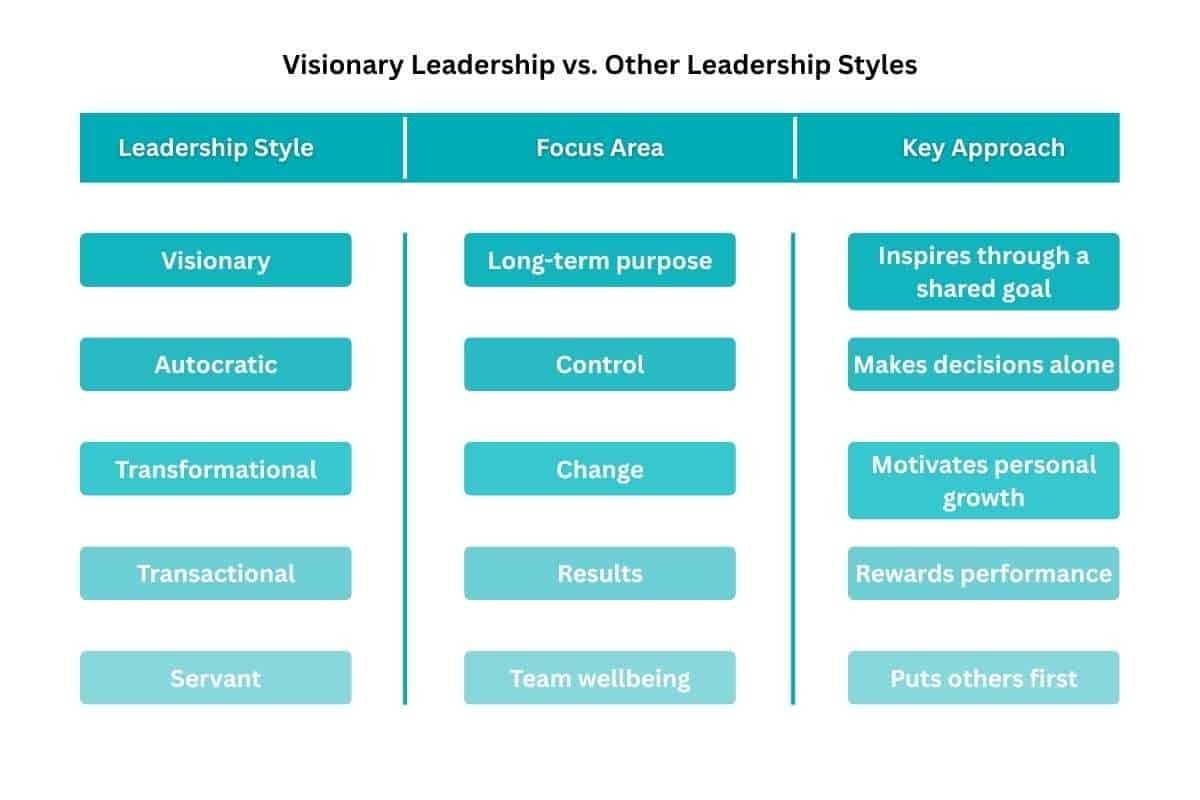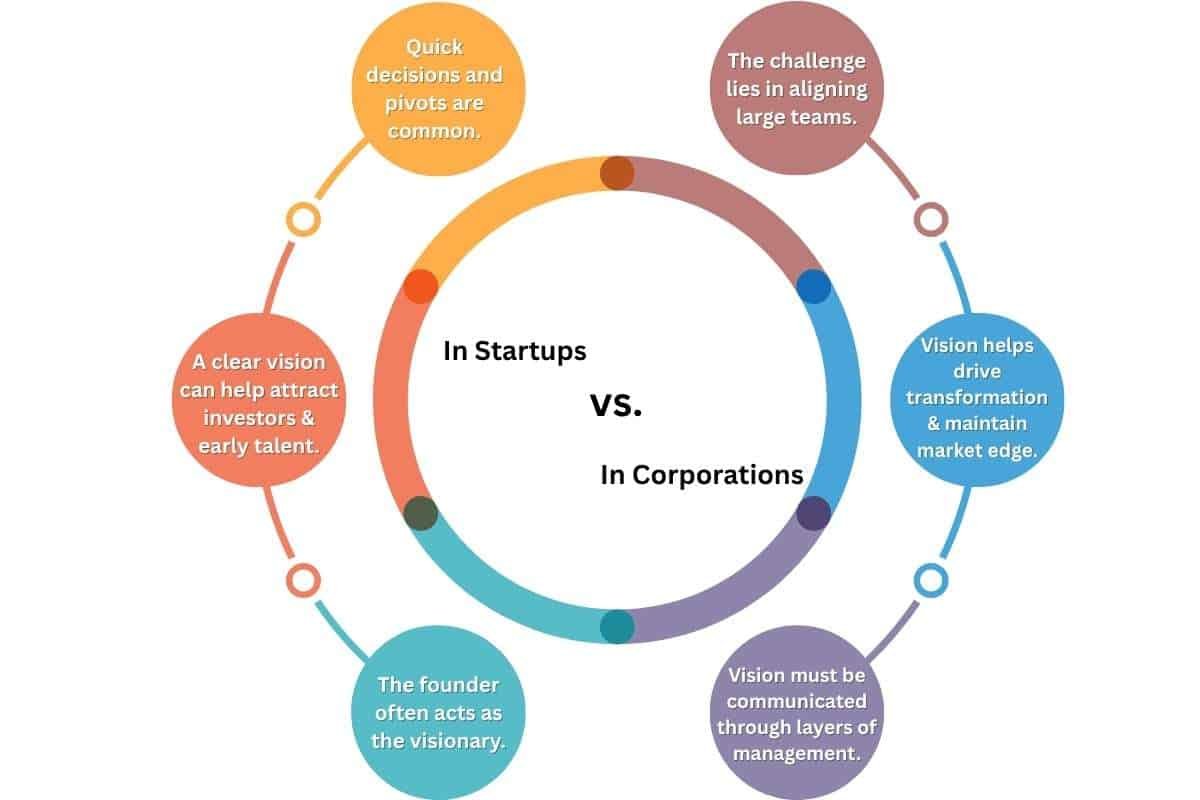In every successful organization, there is a leader who manages everything and also inspires. This leader looks at today’s goals and builds a clear path for tomorrow. This approach is known as visionary leadership. This leadership focuses on big ideas, long-term planning, and inspiring teams to work toward a common goal.
This Leadership creates a lasting impact because it is rooted in purpose. These leaders don’t wait for change; they lead it. In this article, you will explore what makes a visionary leader, how their approach benefits organizations in the digital age, and how their mindset helps businesses grow faster, smarter, and more sustainably.
What is Visionary Leadership?
This type of leadership is a style where a person leads with a clear, compelling vision of the future. This vision guides decision-making and unites people behind a shared mission. A visionary leader isn’t just concerned with short-term goals. They look ahead, anticipate changes, and prepare their teams to meet those changes head-on. Instead of focusing on profits, this type of leader values purpose. Their job is not to micromanage, but to inspire, guide, and open up new paths. This kind of leadership is especially helpful in industries where change is constant.
How Can Visionary Leadership Benefit Organizations in the Digital Age?
The digital age is defined by fast technology shifts, global competition, and changing consumer needs. In a world, Visionary Leadership plays a critical role by providing a sense of direction and clarity.
Benefits Include:
- Adaptability: Visionary leaders embrace change rather than fear it. They are always scanning the horizon for what’s next.
- Innovation: These leaders push their teams to explore new ideas. This mindset encourages innovation that drives long-term success.
- Employee Engagement: Employees want to feel like their work matters. A visionary leader connects their role to a bigger purpose.
- Resilience: Even during uncertainty, having a clear vision helps teams stay grounded and focused.
By creating a culture of innovation and adaptability, this leadership keeps businesses relevant and future-ready.
What are the Key Characteristics of a Visionary Leader?

Not every successful leader is a visionary. This role calls for a specific set of traits that blend foresight, emotional intelligence, and a deep sense of purpose.
Top Traits:
- Clear Vision: They have a strong sense of where they want to take the organization.
- Inspiration: Rather than just giving orders, they rally teams around a shared goal.
- Empathy: They understand people and know how to connect with emotions to build trust.
- Risk-taking: They are not afraid to try something new, even if it fails.
- Curiosity: They are always learning and asking questions about what is next.
- Decisiveness: They take bold steps when needed and don’t shy away from making tough calls.
Together, these traits make visionary leadership more than just strategy; it becomes a movement that people want to be part of.
Famous Examples of Visionary Leadership
History offers many examples of leaders who changed the world by thinking beyond limits. Let’s look at a few who defined leadership through their bold ideas and actions.
Steve Jobs – Apple
Jobs imagined products that didn’t yet exist but would soon become important. His focus on design, simplicity, and user experience made Apple a tech giant.
Elon Musk – Tesla and SpaceX
Musk leads with future-thinking. Electric cars, reusable rockets, and space tourism were once seen as impossible. Now, they’re real because of his vision.
Oprah Winfrey – Media & Philanthropy
Oprah built a media empire by staying true to her mission: to uplift, inspire, and inform. Her journey shows how this leadership can be values-driven.
These examples show that visionary leaders can be found in business, politics, and culture. Their common link is a clear purpose and relentless focus.
The Impact of Visionary Leadership on Business Growth
Business growth isn’t just about more sales; it’s about building a foundation that can last. This leadership supports this in many ways.
Here’s How:
- Better Decision-Making: With a long-term vision in place, companies avoid distractions and stay on course.
- Team Alignment: When everyone understands the “why” behind the work, they become more productive.
- Customer Loyalty: Vision-driven companies often stand out. People are drawn to brands with values.
- Sustainable Success: Visionary leaders look beyond quarterly results. They build companies that thrive for decades.
Visionary Leadership vs. Other Leadership Styles
To understand what sets Leadership apart, it’s useful to compare it with other leadership styles.

| Leadership Style | Focus Area | Key Approach |
| Visionary | Long-term purpose | Inspires through a shared goal |
| Autocratic | Control | Makes decisions alone |
| Transformational | Change | Motivates personal growth |
| Transactional | Results | Rewards performance |
| Servant | Team wellbeing | Puts others first |
Only Visionary Leadership combines innovation with inspiration in a way that prepares companies for a fast-changing future.
Developing Visionary Leadership in Your Organization
It’s not enough to have one visionary at the top. Companies grow stronger when Visionary Leadership is nurtured across all levels.
Steps to Build It:
- Encourage Big Thinking: Create space where people can share bold ideas without fear.
- Provide Purpose: Make sure teams understand how their work connects to the mission.
- Support Learning: Invest in leadership training, mentoring, and growth opportunities.
- Celebrate Innovation: Highlight efforts that bring long-term value, even if they don’t succeed right away.
This culture makes it easier for future leaders to emerge and carry the vision forward.
Challenges of Visionary Leadership
While powerful, this style isn’t without difficulties. Understanding the challenges can help improve the approach.
Key Challenges:
- Execution Gaps: Big visions need solid plans. If there is no action, ideas stay ideas.
- Resistance to Change: Not everyone will support a new direction. Visionary leaders must win trust.
- Burnout Risk: Carrying a big mission can lead to stress. Balance is essential.
Successful Leadership combines passion with patience. It’s a long game.
How Visionary Leadership Shapes Company Culture?
Company culture shapes how teams work and what they believe in. A visionary leader deeply influences this by modeling purpose-driven behavior.
When a leader stays true to their values and acts with clarity, it inspires trust. This trickles down into daily habits, how meetings are run, how conflicts are resolved, and how teams take risks.
This leadership turns workplaces into mission-driven environments where people thrive. It makes room for courage, honesty, and growth.
Visionary Leadership in Startups vs. Large Corporations
Vision is essential at all business stages, but how it works can differ.

In Startups:
- The founder often acts as the visionary.
- Quick decisions and pivots are common.
- A clear vision can help attract investors and early talent.
In Corporations:
- Vision must be communicated through layers of management.
- The challenge lies in aligning large teams.
- Vision helps drive transformation and maintain market edge.
Also Read:
- 15 Qualities of Great Leaders to inspire the leader within you
- The Blueprint for Success: 20 Key Qualities of a Good Leader
- 7 Best Books on Leadership to Inspire, Motivate, and Lead with Confidence
Conclusion
This leadership is more than just a style; it is a mindset. It helps businesses grow with purpose, adapt with speed, and lead with heart. Whether you’re running a startup or leading a global brand, having a clear, inspiring vision makes all the difference.
True leaders don’t just react to the world, they shape it. And that’s the power of visionary leadership.
FAQs:
1. Can visionary leadership be learned?
Yes. While some people naturally think big, others can learn to lead with vision through practice, mentorship, and purpose-driven thinking.
2. Is visionary leadership only useful in tech or startups?
Not at all. Visionary leaders are needed in healthcare, education, non-profits, and even government.
3. How do visionary leaders deal with failure?
They see failure as feedback. It’s part of the process, not the end. They learn, adjust, and keep moving.
4. What’s the difference between a visionary and a dreamer?
A visionary not only dreams but also builds. They take steps to turn ideas into action.
5. How can I bring more vision into my team?
Start by asking: What’s the bigger purpose behind your work? Share that answer. Let people see how their tasks help achieve that vision.










